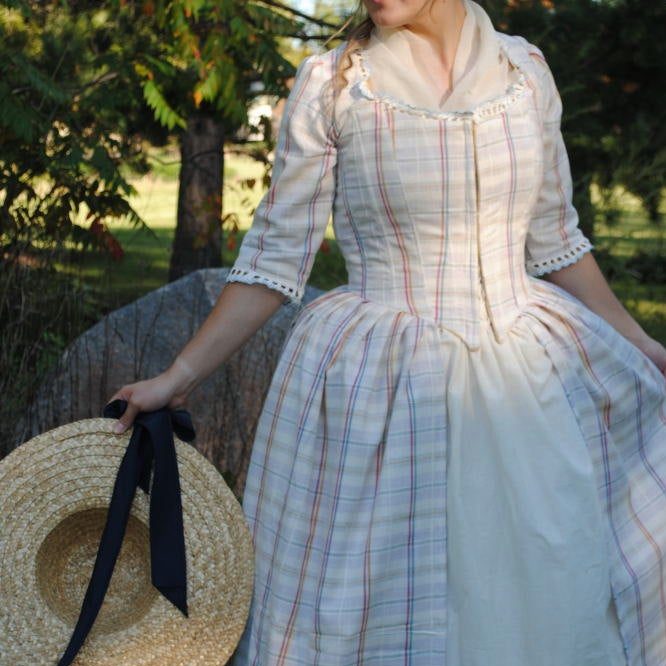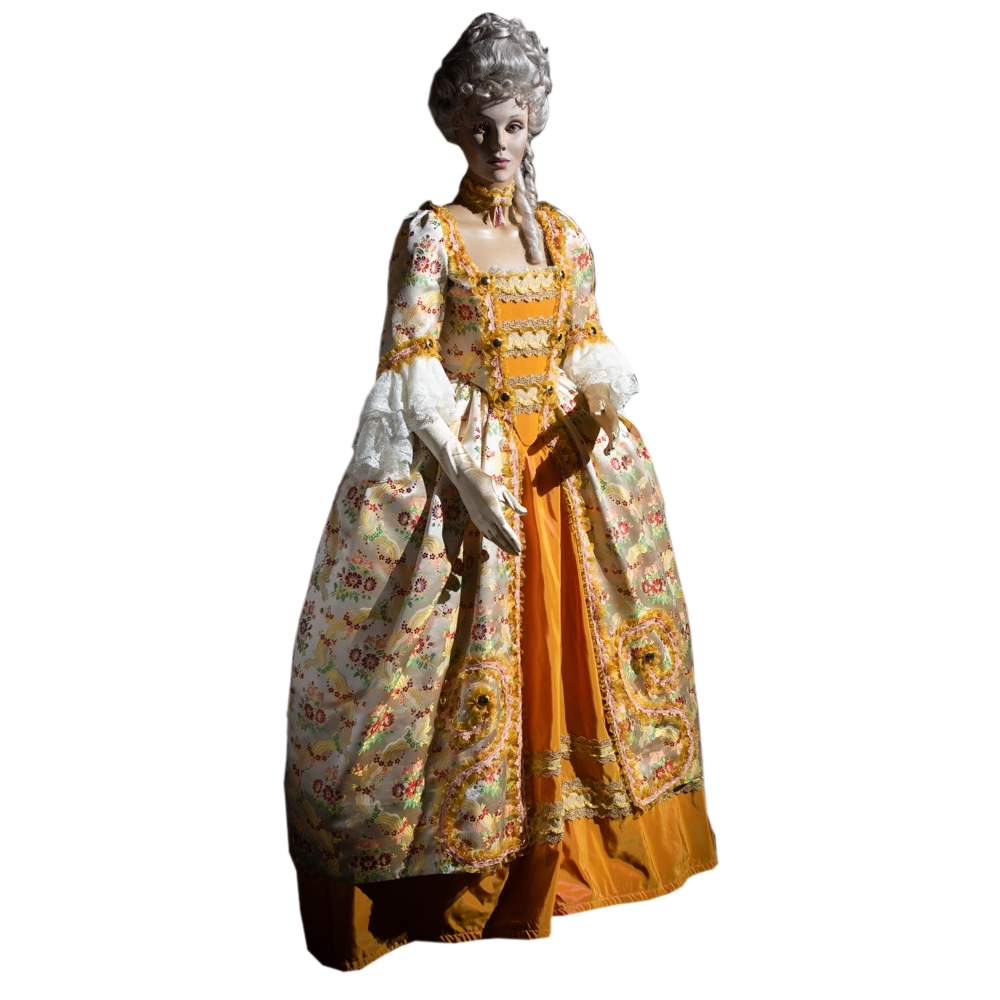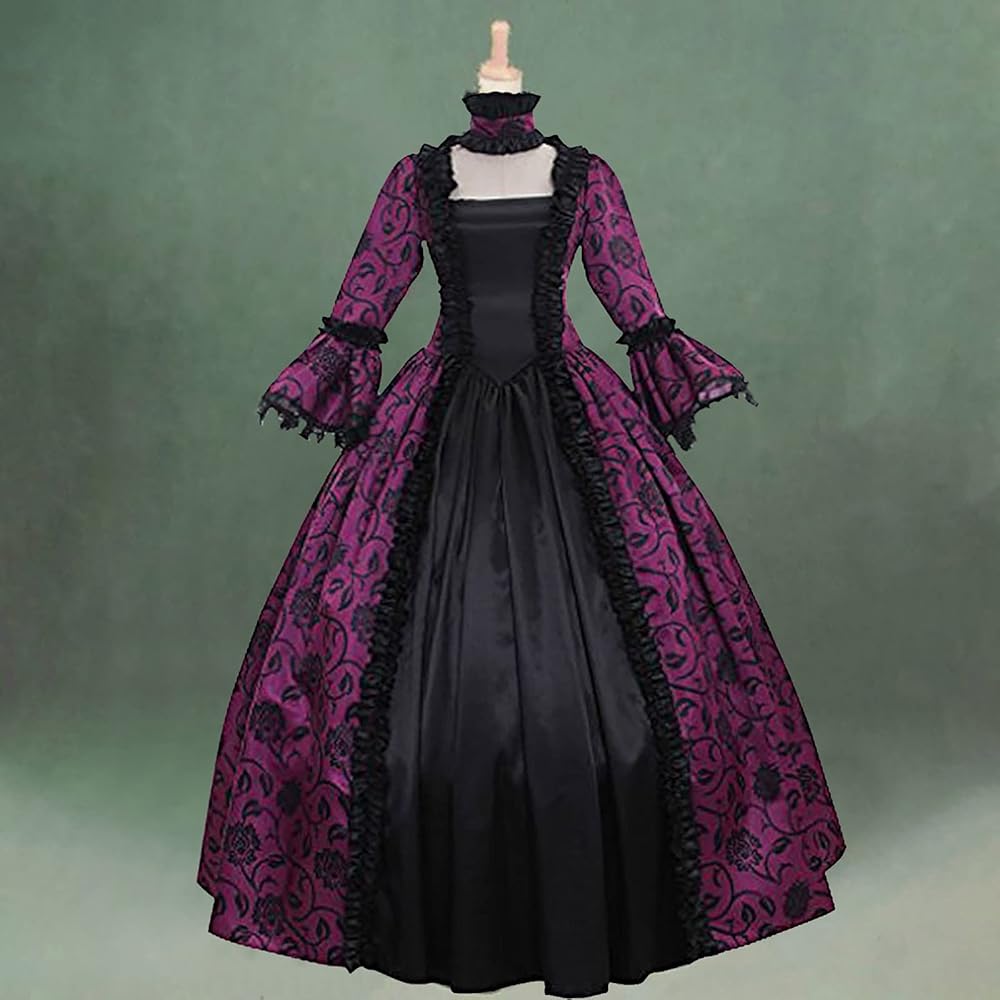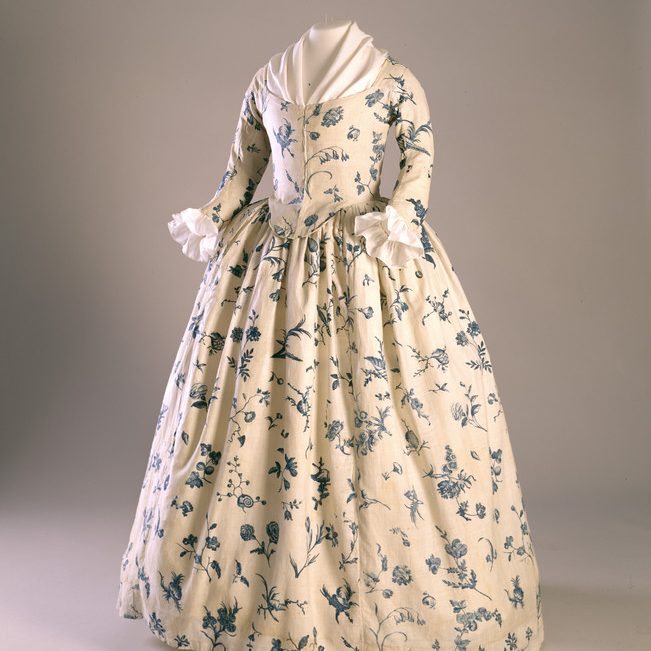The History and Significance of 1700s Fashion
The 1700s were a turning point in fashion history. This era, often referred to as the 18th century, showcased elaborate styles that mirrored the societal changes of the time. Clothing became a clear indicator of social status, and none more so than the intricate 1700s dresses worn by women of the upper classes. These gowns were not just garments but also a form of expression and art, complete with embellishments and fine fabrics that indicated wealth and taste.
Reviving the elegance of the 1700s today means appreciating the rich narratives woven into the fabric of these historic pieces. As we delve into the pages of fashion history, we find that the elaborate dresses of the 1700s were a canvas for displaying the craftsmanship of dressmakers. The gowns featured ornate decorations such as lace, embroidery, and ribbons, which were symbols of meticulous handiwork and luxury.
Moreover, these gowns told a story about the societal expectations and roles of women during that century. They were designed to be wide, with silhouettes achieved by hoops and layers of petticoats, to present an image of grace and prominence at social gatherings.
Understanding the history behind 1700s dresses gives modern admirers a sense of connection to the past. It allows us to reflect on how fashion has evolved and its impact on culture and society. By embracing the 1700s fashion, we not only pay homage to the artists and wearers of that time but also keep the flame of historical elegance burning in modern times.

Key Features of 1700s Dresses
1700s dresses are known for their distinct style and opulence. When we look at these historic garments, certain features stand out, making them instantly recognizable. Here are those key characteristics that set 1700s dresses apart from other fashion eras.
- Silhouette: A defining trait of 1700s fashion was the silhouette. Dresses featured a wide, bell-shaped skirt. This shape came from the use of hoops and petticoats. The silhouette showed wealth and status at grand events.
- Fabrics: Luxurious fabrics were the norm. Silks, satins, and brocades adorned these dresses. They often had intricate patterns and vibrant colors. These materials were a mark of luxury. Only the elite could afford such finest fabrics.
- Decoration: Embellishments were lavish. Think lace, embroidery, and ribbons. Even metallic threads and ornate buttons were common. Dresses showcased the skills of their creators through these elaborate decorations.
- Bodice: A fitted bodice was essential. It contrasted with the wide skirts. The bodice often had corsetry to define the waistline. This contrast emphasized the desired hourglass figure of the time.
- Sleeves: Sleeves varied in style. They ranged from tight and narrow to puffed and draped. Some had ruffles at the elbow, while others had lace cuffs. The variation in sleeves added another element of design to these gowns.
- Neckline: The fashionable neckline was often low and square. This allowed for the display of fine lace or linen chemises beneath the dress. It was also a canvas for jewelry and neck adornments.
Understanding and recognizing these features helps in creating authentic 1700s inspired outfits. It also aids costume designers and history enthusiasts aiming to capture the authentic essence of the era.

How to Source Authentic 1700s Dress Styles
To channel the elegance of the 1700s, authentic dress styles are key. However, sourcing these historic pieces can be a challenge. Here are some tips to help you find the real deal.
- Vintage Shops: Scour vintage shops for genuine articles. These shops sometimes hold hidden treasures. Patience and frequent visits might lead you to a genuine 1700s dress.
- Auctions: Keep an eye on auction houses. They often sell antique clothing. Be sure to research beforehand to know what to look for.
- Online Marketplaces: Explore online platforms. Some sites specialize in selling vintage and antique clothing. Use keywords like ‘1700s dresses’ or ‘antique gowns’ in your search.
- Specialist Dealers: Connect with dealers who focus on historical garments. They often have a curated collection of authentic pieces.
- Museums and Estates: Some museums and historical estates offer replicas or original dresses for sale. Contact them for leads to accurate sources.
- Historical Societies: Reach out to local historical societies. Members may know where to find genuine 1700s dresses or could have them for sale.
- Custom Creations: If authentic items are out of reach, consider a custom creation. Find a tailor skilled in historical clothing to recreate a 1700s dress style for you.
Remember to use caution when purchasing. Ensure authenticity by asking for proof of the garment’s era. Knowledge about fabrics and styles of the 1700s will help you discern genuine dresses from replicas or fakes. Happy hunting as you search for a piece of fashion history!

Incorporating 1700s Fashion into Modern Wardrobe
Blending historic 1700s fashion with modern style can be a challenge, yet it is achievable. To do so, you should focus on integrating key elements of 1700s dresses into contemporary outfits. This approach not only honors the artistic value of these garments but also adds a unique twist to your modern wardrobe. Here are some tips to help you incorporate 1700s style into today’s fashion:
- Start with Silhouette: Use structured skirts or dresses that mimic the bell shape of the 1700s. Pair them with a modern corset belt for an instant period look.
- Fabrics and Patterns: Choose rich, textured fabrics like velvets or brocades. Look for modern items with floral or damask patterns reminiscent of the 1700s.
- Embellishments: Add lace trimmings, ruffles, or embroidered patches to dresses, blouses, or even jackets. Such details can give a subtle nod to the era’s opulence.
- Sleeve Design: Incorporate puffed or draped sleeves in your blouses. This small change can make a big impact on the overall feel of your outfit.
- Accessorize with Care: Select chokers or cameo brooches that hint at the antique style. These can complement your outfit without overwhelming it.
By carefully selecting aspects of 1700s fashion, you can create an ensemble that pays tribute to the past while staying stylish and relevant in the present. Such outfits can turn heads and spark conversations about the rich history of fashion.
DIY Tips for Creating Your Own 1700s Inspired Dress
Creating your own 1700s inspired dress is both an exciting and fulfilling project. Here’s how you can get started with some do-it-yourself tips:
- Choose Your Pattern: Look for dress patterns that reflect the 1700s style. Simplicity or Butterick may have suitable options. Make sure the pattern includes a full skirt and a fitted bodice.
- Select Appropriate Fabrics: Choose fabrics like brocade, silk, or velvet. Aim for rich colors and possibly floral patterns to mimic 1700s fabrics.
- Focus on the Silhouette: Construct or purchase a pannier or hoop skirt to achieve the wide, bell-shaped silhouette. It’s vital for the authentic 1700s look.
- Sew with Detail: Pay attention to details such as lace trimmings and ribbon ties. These small touches bring the period feel to life.
- Consider the Sleeves: Opt for elbow-length sleeves with ruffles or lace at the cuffs. These were popular in the 1700s era.
- Be Patient: Take your time with each step. Remember, 1700s dresses were about showcasing craftsmanship.
By following these tips, you can create a 1700s inspired dress that honors the past while allowing for creative expression. Take joy in the process, knowing each stitch connects you with the elegance of bygone fashion.

Accessorizing 1700s Dresses for Today’s Look
Accessorizing is key to nailing the 1700s look with a modern twist. Here are simple ways to do it:
- Jewelry: Choose vintage-inspired pieces like pearl necklaces, cameo brooches, and filigree rings. Keep it elegant.
- Footwear: Opt for shoes with buckles or embroidery. Modern Mary Janes or velvet flats can work well.
- Headwear: Add a lace-trimmed bonnet or a feathered hat. Hair accessories like ribbon bows also make a statement.
- Gloves: Wear long, satin gloves. They add a touch of class and stay true to the period.
- Fans and Parasols: Handheld fans or parasols bring an authentic 1700s vibe to your outfit. Choose delicate designs.
Remember, the goal is to blend the old with the new. Strike a balance between historical elements and modern comfort. Each accessory should complement your outfit, creating a look that’s both historically inspired and fashionably current.
Maintaining Historical Accuracy While Being Fashion-Forward
Maintaining historical accuracy in 1700s dresses while embracing modern fashion trends presents a unique challenge. It involves a delicate balance between authenticity and contemporary aesthetics. The following tips can help you navigate this balance and wear 1700s-inspired fashion today with confidence.
- Study the Era: Gain knowledge about 1700s fashion. Understand the era’s clothing cuts, fabrics, and accessories to remain true to the period.
- Choose Classic Pieces: Select items that reflect the era’s style. Aim for pieces that can blend with modern garments. An antique-style corset can serve this purpose well.
- Modern Interpretation: Use the era’s influence as a starting point. Then, adapt the designs to fit current fashion trends. A 1700s-style dress with a contemporary print could work perfectly.
- Functionality Matters: Ensure the outfit is practical for today. You could replace restrictive panniers with more wearable alternatives for comfort.
- Mix and Match: Pair period pieces with modern basics. A brocade jacket could complement a simple modern dress or slacks.
- Accessorize with Care: Select accessories that hint at the 1700s but are still fashionable. A piece of lace or a velvet choker can add old-world charm without looking out of place.
- Tailoring is Key: Professionally tailor your outfit to ensure a fit that honors the past but suits today’s styles.
By following these suggestions, you can wear 1700s-inspired attire that is not only historically accurate but also in line with contemporary fashion. The ultimate goal is to showcase the timeless appeal of 1700s dresses while keeping your look fresh and relevant.
Events and Occasions for Showcasing 1700s Dresses Today
Finding the right event or occasion to showcase your 1700s dress today can be fun. You’ll want to choose gatherings that appreciate historical fashion or celebrate bygone eras. Here are several settings where you can shine in your 1700s dress:
- Theme Parties: Attend or host a themed event. A ‘Marie Antoinette’ or ‘Rococo’-styled party is perfect for this dress style.
- Historical Reenactments: Participate in reenactments. They often welcome historically accurate attire. You can immerse yourself and others in the era.
- Costume Balls: Look for balls with a historical dress code. These elegant gatherings are great for showing off your 1700s look.
- Theatre Productions: Join local theatre groups that perform period plays. Your dress could help bring the story to life on stage.
- Fashion Shows: Find fashion shows featuring vintage styles. A runway featuring historical replicas can be a showstopper.
- Photo Shoots: Arrange a photo session. It can be for personal enjoyment or a historical fashion blog.
- Heritage Festivals: Take part in cultural or heritage festivals. Many celebrate different historical periods, including the 1700s.
Choose the right venue, and your dress will not only look fantastic but also inspire others to appreciate the elegance of the 1700s. When you dress up, remember to wear your outfit with pride and confidence. Enjoy the charm and attention that come with wearing a piece of living history.
